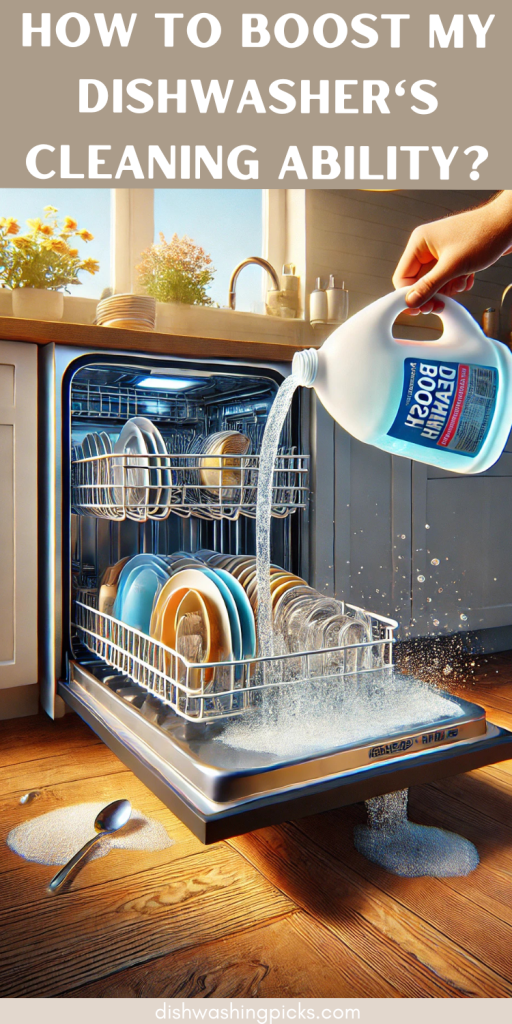
Ever pulled a supposedly “clean” plate out of the dishwasher only to find a crusty piece of last night’s dinner still hanging on? Frustrating, right? You bought a dishwasher so you wouldn’t have to scrub dishes like it’s the 1800s—so why isn’t it pulling its weight?
Here’s the good news: your dishwasher wants to do a great job. It just might need a little help. A tweak here, a trick there, and you’ll have sparkling dishes every time. Let’s get into it!
1. Are You Loading It the Right Way?
Yep, there’s a right way to load your dishwasher—and a very, very wrong way. Think of it like a game of Tetris, except the goal isn’t just to fit everything in—it’s to make sure water and detergent can reach all your dishes.
Plates & bowls → Angle them toward the spray arms for maximum cleaning power.
Pots & pans → Bottom rack, upside down, so water doesn’t pool inside.
Glasses & mugs → Top rack, between the tines—not over them (to prevent water spots).
Silverware → Mix up forks, spoons, and knives to avoid nesting.
Overcrowding = Bad news. If dishes are too tightly packed, water won’t reach everything. (Yes, that means leaving that one extra mug for the next load. It’s okay, we promise.)
2. The Secret Weapon: Hot Water
Your dishwasher is basically a mini car wash for your dishes, and just like a car wash, hot water makes a huge difference. Before starting a cycle, run your kitchen sink’s hot water for 30 seconds—this ensures your dishwasher starts with hot water right away.
Bonus tip: If your dishwasher has a “high temp” or “sanitize” setting, use it! It helps dissolve grease and kill bacteria more effectively.
3. Not All Detergents Are Created Equal
Ever wonder why some dishwashing detergents cost twice as much as others? It’s not just fancy packaging—some formulas are genuinely better at cutting through grease and preventing hard water spots.
Look for detergents with:
Enzymes (break down food particles)
Surfactants (lift grease)
Rinse aid boosters (help dishes dry without streaks)
Powder, pods, or liquid? Pods are convenient and pre-measured, but powders often pack more cleaning power. Liquids? Meh, they can leave residue.
4. Clean Your Dishwasher—Yes, It Needs It!
Wait… isn’t the dishwasher supposed to clean itself every time it runs? You’d think so, but nope. Over time, food particles, grease, and mineral deposits build up, making your machine work harder (and less effectively).
Here’s what you need to do:
Check the filter (bottom of the dishwasher) → Remove it, rinse it under warm water, and scrub off any gunk with an old toothbrush.
Wipe down the door & seals → Grease and food particles love to hide in those rubber seals.
Run a cleaning cycle → Pop in a dishwasher cleaner tablet (or a cup of white vinegar in the top rack) and run a hot cycle without dishes. This melts away grease and limescale buildup.
Do this once a month, and your dishwasher will reward you with cleaner dishes!
5. Rinse Aid: The Secret to Spot-Free Shine
Ever wondered why your glasses come out covered in water spots? Hard water is the culprit, and rinse aid is the solution.
What does rinse aid do?
It helps water slide right off your dishes, speeding up drying time and preventing spots.
Do you need it?
Yes—especially if you have hard water. If you’re skipping rinse aid, you’re making your dishwasher’s job way harder.
How to use it?
There’s a little compartment labeled “Rinse Aid” inside your dishwasher—fill it up, and you’re good to go for weeks!
6. Water Pressure & Temperature: Are They Dishwasher-Friendly?
If your dishwasher is leaving dishes dirty, it might not be its fault—it could be your water supply.
Water pressure: Dishwashers need at least 20 PSI to work properly. Low pressure = weak spray = food stuck to plates.
Water temperature: The magic number? 120°F (49°C). Anything lower, and grease won’t dissolve properly.
How to check? Run your kitchen sink on hot and use a thermometer to test the temp. If it’s too low, adjust your water heater settings.
7. Don’t Let Dishes Sit Too Long Before Running a Cycle
Here’s a gross truth: letting dirty dishes sit in the dishwasher for days (without running it) lets food dry on like cement. The longer food sits, the harder it is to remove.
- If you’re not running a full load every day, do this:
- Scrape off food (but don’t pre-rinse—your detergent needs something to grab onto).
- Use the “rinse” cycle if your dishwasher has one to prevent food from hardening.
- Run a full cycle as soon as it’s full.
Final Thoughts: A Little Maintenance Goes a Long Way!
Boosting your dishwasher’s cleaning power isn’t rocket science—it’s just about small tweaks that make a huge difference.
Quick Recap:
- Load dishes the right way (no overcrowding!)
- Use hot water and the right detergent
- Clean your dishwasher monthly
- Always use rinse aid for spot-free drying
- Check your water pressure & temperature
- Don’t let dishes sit too long before running a cycle
Make these simple changes, and your dishwasher will reward you with sparkling clean dishes—every time!
